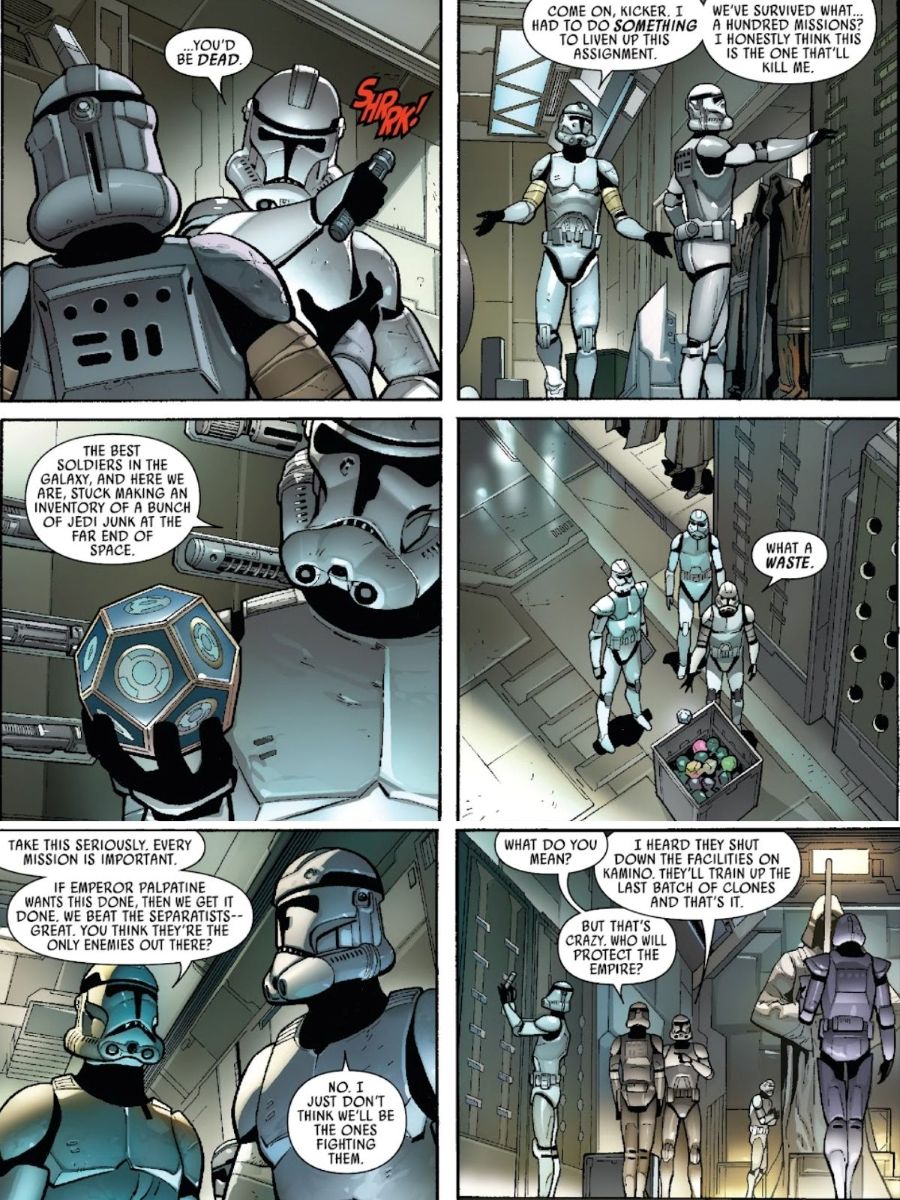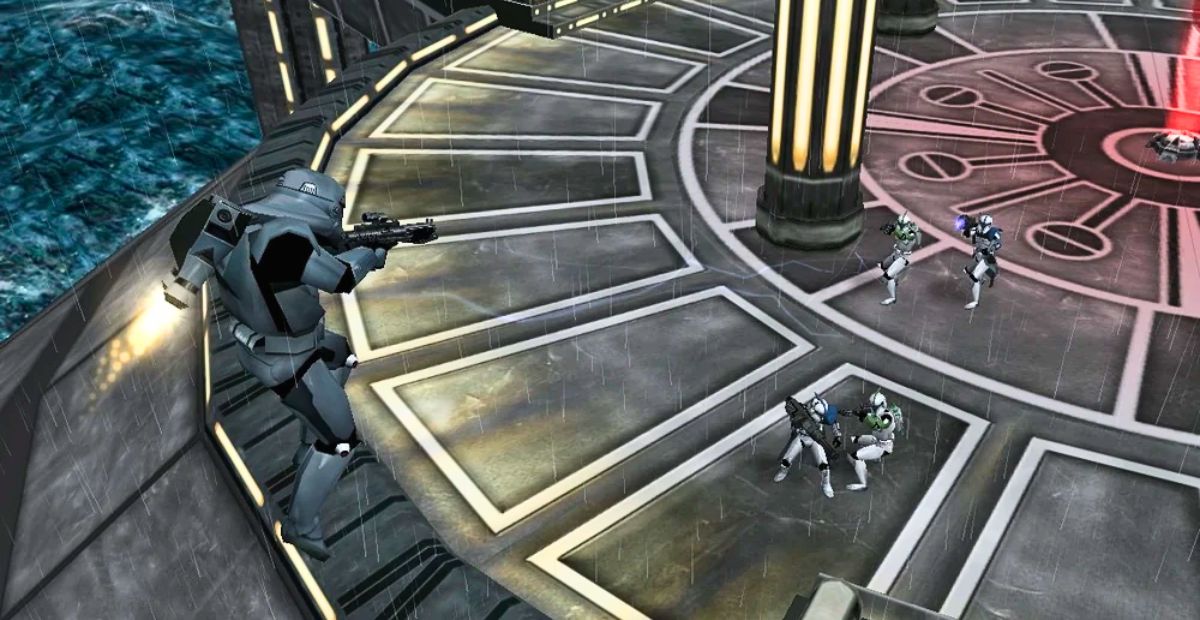Okay, so I used to think the switch from Clone Troopers to Stormtroopers was just budget cuts and propaganda. But then I learned about the Kamino uprising, and now my mind is blown.
The Kaminoans, who literally created the clones, turned around and built their own army to fight the Empire. Palpatine sent Boba Fett to shut it down, and things got messy.
Let me break down how this epic battle forced Palpatine to replace clones for good.
A Secret Rebellion on Kamino (Legends)
It began quietly, almost imperceptibly. The Kaminoans had always been a secretive species, their motives hard to decipher. But behind the sterile walls of Tipoca City, plans were forming.
They saw what Palpatine was building—a galaxy ruled by fear and oppression. And while they weren’t exactly champions of morality, the Kaminoans weren’t ready to let their technology be controlled entirely by the Empire. Their solution? They would fight back.
Using the same genetic material that had built the Republic’s clone army, the Kaminoans began creating a new force—one designed not to serve the Empire, but to resist it. These clones, equipped with the same Phase I armor as their predecessors, were meant to stand against the Empire’s growing tyranny.
But secrets don’t last long in the galaxy, especially under Palpatine’s watchful eye.
When the Empire discovered the rebellion, Palpatine didn’t send a fleet. Instead, he sent one man: Boba Fett.
Fett wasn’t just any bounty hunter—he was a clone himself, an unaltered replica of Jango Fett, and he knew Kamino better than most. He had grown up in Tipoca City, wandering the halls of the very cloning facilities now under siege.
His mission wasn’t just to fight the rebellion. He was to end it entirely.
Fett infiltrated Kamino with the precision only someone intimately familiar with the facility could achieve. He sabotaged key cloning equipment and coordinated an Imperial assault on the Kaminoan forces. The battle was fierce, the kind of conflict the galaxy would never see on the holonews.
As the Kaminoan leadership tried to flee, their ships were shot down, leaving no one alive to continue the rebellion. The uprising was over, but the consequences were just beginning.
The Kamino Uprising left Palpatine with a difficult choice. The Kaminoans had shown that centralized cloning was a liability. Their expertise, once the backbone of the Republic’s army, was now a threat.
Palpatine decided it was too dangerous to rely on clones. The Empire dismantled centralized cloning efforts, scattering production across multiple locations and experimenting with new genetic templates. But that wasn’t enough to ensure the Emperor’s vision of control.
Birth-born recruits—the Stormtroopers—became the backbone of the Empire’s military. Unlike clones, these soldiers came with no built-in loyalty to Jango Fett. They were indoctrinated through Imperial academies, bound not by programming but by ideology.
The Kaminoan rebellion was erased from public record, its memory buried deep in the Empire’s archives. Kamino itself fell under strict Imperial control, its once-proud cloning facilities reduced to tools of oppression.
From the point of view of a Clone Trooper from the game Star Wars Battlefront II, based on the 501st journal, we can clearly see this event. The journal entries provide a first-hand account of the experiences and emotions of a Clone Trooper during this transition, offering a deeper understanding of the impact of these strategic decisions on the individuals who were most affected by them.
The End of the Clone Troopers – Canon
In the Star Wars Canon, the Clone Troopers were informed that they would be replaced by Stormtroopers. This news was delivered directly to the Clone Troopers within the first few months of the Empire’s reign.
As depicted in the 2017 Darth Vader issue #2, the clone troopers were no longer deployed in battle and were instead relegated to menial tasks. Conversations among the Clone Troopers revealed that Palpatine intended to replace them by shutting down the cloning facilities on Kamino, with Stormtroopers set to take their place.

By the fifth year of the Empire, nearly all clones had been phased out of the Imperial army. Only a few remained within the Stormtrooper Corps, but their numbers continued to dwindle due to the side effects of accelerated aging, which began to degrade them both mentally and physically.
This transition is poignantly illustrated in the Obi-Wan series, where we see an elderly clone trooper begging for credits to survive.
A Strategic Move by Emperor Palpatine
Replacing the Clone Troopers with the human recruit as Stormtrooper is also part of Emperor Palpatine’s plan. This strategic move had several key aspects:
- Control and Propaganda: By recruiting regular citizens into the Stormtrooper Corps, the Empire was able to establish academies across the galaxy. These academies served as a platform for disseminating propaganda, allowing the Empire to indoctrinate its soldiers with its ideologies from a young age.
- Financial Considerations: Clones were expensive to produce as they required the costly process of ordering, growing, and training copies of Jango Fett. By transitioning to Stormtroopers, the Empire was able to avoid these high costs.
- Distrust of Clones: There was a level of distrust of clones within the Empire, partially due to a series of clone uprisings. By replacing clones with Stormtroopers, the Empire was able to mitigate this risk.
- Recruitment of Citizens: A planet with children serving in the Imperial Navy would be far less likely to resist Palpatine’s regime. Therefore, by replacing the faceless clone troopers with normal human Stormtroopers, the Empire was able to further tighten its grip on the galaxy.
- Rapid Aging of Clones: Clones, being genetically identical copies of bounty hunter Jango Fett, were designed to age at an accelerated rate. This meant that they would become too old to serve in combat roles within a few years of their creation.

